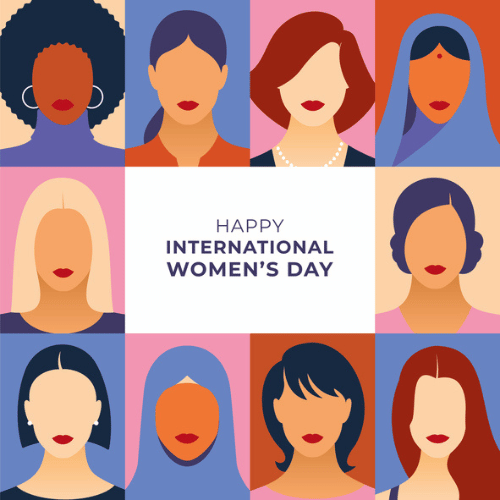Gender Diversity in EHS&S: Focus on Support, Empathy, Compassion




 Gender diversity has become essential for companies in creating an equal, innovative, and positive work environment. A more diverse Environmental, Health, Safety and Sustainability (EHS&S) workforce will drive ongoing industry innovation.
Gender diversity has become essential for companies in creating an equal, innovative, and positive work environment. A more diverse Environmental, Health, Safety and Sustainability (EHS&S) workforce will drive ongoing industry innovation.
According to industry statistics, a great opportunity exists across all EHS&S sectors to incorporate more diversity—not only of gender or gender identity but also of experience, knowledge and skill sets, and ideas.
Consider the following:
- The EHS&S industry is primarily male-dominated. Only one in four members of the safety workforce is female.
- Approximately one in four tech-related jobs are held by women.
- The typical safety leader, statistically speaking, is a white male in his fifties living in the Midwest and working for a manufacturing company.
Women with EHS&S and technology experience can bring a fresh approach and offer unique perspectives to meet the greatest industry challenges and help solve their organizations’ most demanding problems.
This Women’s History Month, SAI360 wanted to learn more about the one in four professional women comprising the safety and technology industries. To get to know the industry’s female outliers’ views on workplace gender diversity and what unique vantage points they bring, SAI360 interviewed four established EHS&S women leaders and professionals.
The panel featured Julie-Ann Clark, Global EHS Data and Reporting Manager, Sandvik, Christine Adeline, SVP Product Management—EHS&S, SAI360, Rhandi Selde, Senior Consultant and Subject Matter Expert (SME), SAI360, and Liz Clarke, Principal Consultant, SAI360.
Moderated by Christine Adeline, the panel touched on various aspects of gender diversity including how and why they choose EHS&S as a career option, what barriers they faced, how their typical day looks as an EHS&S professional, and—most importantly—how and why companies should support gender diversity in the field of EHS&S.
Below, we highlight the panel’s suggestions for companies interested in attracting a more diverse workforce.
Present equal opportunities for women to succeed
Interestingly, for all three women we spoke with, EHS&S was not their initial career path of interest. It was one they navigated or gravitated toward through trial and error, redirection, or deciding to embark on a different career trajectory than initially planned.
For Julie-Ann Clark, Global EHS Data and Reporting Manager, Sandvik, who has now worked in the mining industry for four decades, EHS&S, wasn’t something she set out to do, but rather something she fell into over many, many years. According to Julie-Ann, when she initially entered the mining industry, the workload was notably different depending on your gender.
“I noticed men were doing lots of things and women were doing certain things—not what the men were doing,” said Julie-Ann. “I very quickly learned, certainly in my own case, I was more than capable of doing what they were doing.”
Julie-Ann started offering services to others to fill in gaps. “I would say, ‘Okay, I can do that. Would you like me to do that for you?’ And it snowballed from there. I ended up with work they didn’t want to do, but in the end, it grew me into the person I am today.”
Create opportunities to support and empower female workers
Offering more employees the chance to work on their terms, such as being able to work remotely in order to balance childcare needs with professional obligations, can make a significant difference.
According to Christine Adeline, SVP Product Management, SAI360, “To attract gender diversity, flexibility on what employers offer will go a long way in making sure there is enough of a balance of women and men doing jobs in technology and safety.”
Ultimately, the industry is human-first and technology-second. “The adoption of EHS&S technology will continue to grow in priority as organizations seek to maximize the productivity of a very limited workforce,” Christine added. “No matter what the technologies are and how great they are, you need people to implement and support organizations to ensure they get the return on investment of those technologies.”
Connect the dots between increased client empathy and increased client results
Empathy, webinar panelists agreed, is one of the strengths women bring to this industry. For Rhandi Selde, Senior Consultant and SME, SAI360, getting to know what her clients really need and want means getting to know them as real people, through and through.
“I like being best friends with my clients. I like knowing everything about them. I like going to their weddings. I like going and seeing their children at assembly. That’s my jam,” said Rhandi, who has 25 years of industry experience. Because she knows her clients so deeply, when they ask her for something, they can seamlessly talk through a problem together.
Deep communication fosters deep trust, which is particularly important when working on a challenging goal. For example, when a client requests something that is not in their project scope, that can be a difficult conversation. However, if a trust-based relationship already exists, it can be easier to see eye-to-eye.
Rhandi feels that working with clients and building relationships from cradle to grave on technology implementation projects ultimately helps organization improve the efficiency of their EHS&S software and ultimately their overall EHS program. She also believes her clients become more comfortable with data because of those long-term relationships.
“I kind of see myself as the bridge between how a client envisions their software system working for them and the IT team implementing it. So sometimes I’m an interpreter, and sometimes a teacher or a trainer. And sometimes I’m a bit of an external consultant,” she said. “One minute, I’m clarifying a client’s emissions reporting requirements to one of our tech people. And the next minute, I’m explaining to a client’s EHS&S group how using a data warehouse impacts their reporting in dashboarding.”
According to Rhandi, the payoff comes when her client shares something positive like it only takes them ten minutes to do something compared to before when it took two days. “I like that I’m not working in a vacuum,” shares Rhandi. “I get to see the results.”
Rhandi agrees that flexible work policies are critical to ensuring women, often the drivers of their at-home as well as at-work relationships, are attracted to the EH&S industry and stay long-term. Because women are still mainly responsible for caregiving roles at home, whether that’s taking care of their kids, their parents, or their grandparents, jobs with flexible work hours and remote work policies are extremely attractive.
Appreciate that EHS&S is driven by active listening and compassion
Liz Clarke, Principal Consultant at SAI360, points out that people who decide to work in the safety industry are caring people who often excel at active listening. Active listening is about paying attention to what others want beyond yourself. For Liz, active listening plays a critical role in her day-to-day duties.
“My role is to understand what the requirements are, what the gaps are, and how we fill them,” explains Liz. “It’s also listening to the client and knowing how they want something to be and what I can do to make that happen. It’s about not just understanding what Liz wants.”
Liz thinks some women may be hesitant to go into the tech industry thinking it’s more of a man’s world. Or perhaps they had a bad experience in a coding class and are reluctant to try again. According to Liz, people get into the safety profession because they want to make a difference. They care.
“The best things that ever happened to me in my life is when I’ve said, ‘Yes,’” shared Liz. “When an opportunity presents itself, just see where it goes. I can’t recommend it highly enough.”
Final Thoughts
Women are incredibly valuable to the EHS&S and technology industries. If more workplaces can prioritize day-to-day flexibility, build out expanding remote work policies, encourage women to advocate for themselves when work feels unbalanced gender-wise, and value the importance of open internal and external communication, female workers—and all workers—will collectively thrive.



